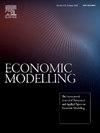Forecasting energy commodity returns: Can weak factors and nonlinearity help?
IF 4.7
2区 经济学
Q1 ECONOMICS
引用次数: 0
Abstract
This study investigates whether incorporating nonlinear structures and weak factors can improve the predictive accuracy of energy commodity returns. Existing literature emphasizes the utility of technical indicators and dimensionality reduction techniques, but it often overlooks nonlinear dynamics and the role of weak factors. To address these gaps, we apply the scaled sufficient forecasting (sSUFF) method, a novel dimension reduction approach, to enhance return predictions. Empirical results show that sSUFF outperforms traditional methods both in-sample and out-of-sample. It remains robust across varying economic conditions and performs particularly well during periods of heightened market volatility, such as the COVID-19 pandemic and the Russia–Ukraine conflict. sSUFF’s advantage arises from its ability to capture nonlinear patterns and effectively distinguish between strong and weak predictors. Economically, sSUFF-based forecasts yield higher investor returns, highlighting their practical value in financial forecasting and their relevance to investment strategies, risk management, and policy decisions.
预测能源商品收益:弱因子和非线性是否有帮助?
本研究探讨纳入非线性结构及弱因子是否能提高能源商品收益的预测准确度。现有文献强调技术指标和降维技术的效用,但往往忽视了非线性动力学和弱因素的作用。为了解决这些差距,我们应用尺度充分预测(sSUFF)方法,一种新颖的降维方法,以提高回报预测。实证结果表明,sSUFF在样本内和样本外都优于传统方法。它在各种经济条件下都保持强劲,在2019冠状病毒病大流行和俄罗斯-乌克兰冲突等市场波动加剧期间表现尤其出色。sSUFF的优势在于它能够捕获非线性模式并有效区分强预测器和弱预测器。经济上,基于ssf的预测产生更高的投资者回报,突出了它们在财务预测中的实用价值,以及它们与投资策略、风险管理和政策决策的相关性。
本文章由计算机程序翻译,如有差异,请以英文原文为准。
求助全文
约1分钟内获得全文
求助全文
来源期刊

Economic Modelling
ECONOMICS-
CiteScore
8.00
自引率
10.60%
发文量
295
期刊介绍:
Economic Modelling fills a major gap in the economics literature, providing a single source of both theoretical and applied papers on economic modelling. The journal prime objective is to provide an international review of the state-of-the-art in economic modelling. Economic Modelling publishes the complete versions of many large-scale models of industrially advanced economies which have been developed for policy analysis. Examples are the Bank of England Model and the US Federal Reserve Board Model which had hitherto been unpublished. As individual models are revised and updated, the journal publishes subsequent papers dealing with these revisions, so keeping its readers as up to date as possible.
 求助内容:
求助内容: 应助结果提醒方式:
应助结果提醒方式:


